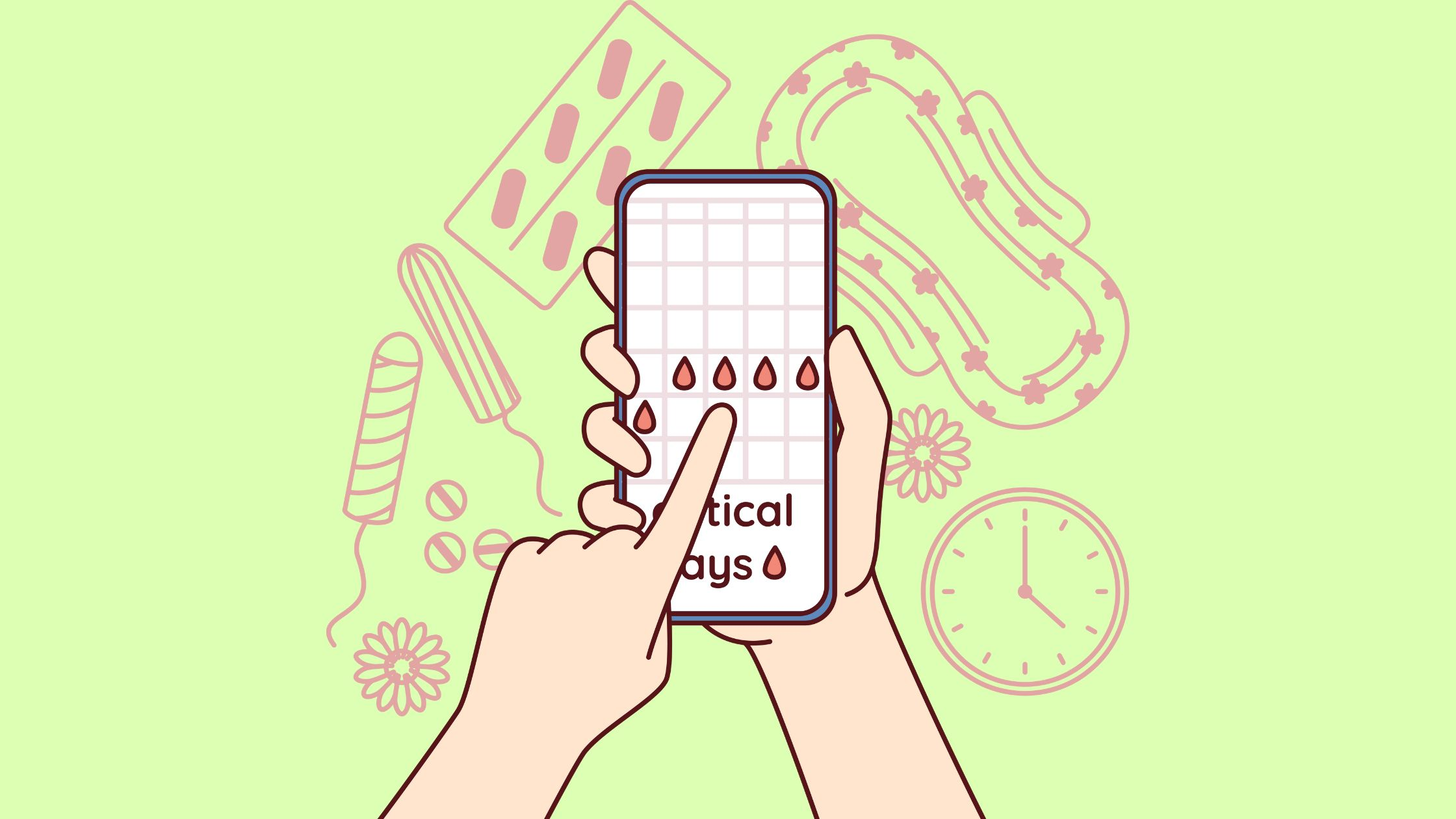So, you’re breastfeeding your little one and wondering if your body’s got back into the swing of things? It’s a common question for new moms – can you ovulate while breastfeeding?
Typically, ovulation does not occur during exclusive breastfeeding. And if you are not ovulating, you can’t get pregnant. In fact, exclusively nursing your infant for the initial six months is often viewed as a natural form of birth control – if it is done in a specific manner.
During breastfeeding, your body’s signals may go a little haywire. For instance, you might not have your period yet, but that doesn’t mean you’re not ovulating.
Signs of ovulation during breastfeeding aren’t always clear-cut or the same for every woman. Therefore, looking out for subtle cues – a twinge here, a little spotting there – might give you a heads-up!
So, strap in. We’re about to decode these signs of ovulation while breastfeeding.
But first, let’s learn a little about what is happening in your body when you’re breastfeeding.
Breastfeeding Hormone’s Role in Ovulation
The process of using breastfeeding as a natural means of contraception is called the lactational amenorrhea method (LAM). The effectiveness of this method depends on the frequency and duration of breastfeeding, among other factors.
How does it work, though?
Prolactin, the hormone responsible for producing breast milk, plays a central role in milk production and suppression of ovulation.
When a baby suckles at the breast, prolactin is released. It inhibits the production of gonadotropin-releasing hormone (GnRH), which is responsible for the stimulation of follicle-stimulating hormone (FSH) and luteinizing hormone (LH). Without sufficient FSH and LH, the ovary will not release an egg, preventing ovulation and menstruation.
Prolactin’s influence on ovulation is not entirely dependent on breastfeeding frequency. It also depends on the duration and intensity of each nursing session. Longer time and frequent nursing sessions stimulate greater prolactin release, increasing the likelihood of ovulation suppression.
Night-time nursing sessions, known as “cluster feedings,” are also crucial in maintaining high prolactin levels, further suppressing ovulation.
It’s important to recognize that the relationship between breastfeeding and ovulation is intricate. Variations in individual physiology can lead to variations in the return of fertility.
Lactational Amenorrhea Method (LAM) and its Efficacy
LAM can be a highly reliable contraceptive method when properly applied and understood. Still, it doesn’t guarantee 100 percent prevention.
Research indicates that correct usage of LAM can yield an effectiveness rate of 98 to 99.5 percent. The efficacy of this method relies on three things:
- Exclusively breastfeeding the infant with breast milk without any supplementation with formula. This involves nursing the baby every four hours throughout the day and every six hours at night.
- The baby should be under 6 months of age.
- Mother’s menstrual cycle should not have been resumed yet.
If any of these conditions are not met (e.g., menstruation returns, formula is introduced, or the baby exceeds six months of age), LAM may no longer be a practical or effective contraceptive method for you.
Debunking Myths About Fertility During Breastfeeding

There is a prevalent myth that breastfeeding acts as a foolproof form of birth control, offering complete protection against pregnancy.
A study found that women who breastfeed more frequently and for longer periods generally experience longer anovulation (absence of ovulation).
Moreover, breastfeeding frequency and the total amount of time spent breastfeeding per day (which may vary depending on cultural and individual practices) can significantly affect the timing of the return of ovulation.
For instance, a research revealed that in Baltimore, women who breastfed less frequently but for more extended periods experienced a return of ovulation at an average of 27 weeks postpartum. In contrast, women from Manila who breastfed more regularly but for less time saw ovulation resume at an average of 38 weeks postpartum.
While breastfeeding can have contraceptive effects, it is not entirely reliable. As time progresses and breastfeeding patterns change, the reliability of the LAM method diminishes.
An article published in the Journal of Obstetric, Gynecologic & Neonatal Nursing discusses that breastfeeding is generally considered an unreliable method of contraception. Nonetheless, the article does acknowledge that breastfeeding can be beneficial for spacing births.
Moreover, many studies show that the effectiveness of LAM as birth control is not 100 percent. Factors that can influence the return of ovulation include the frequency and duration of breastfeeding sessions, the introduction of solid food or formula to the baby’s diet, and individual hormonal variations among women.
Therefore, breastfeeding mothers must be aware of this and consider alternative forms of contraception if they don’t want to get pregnant.
Signs of Ovulation While Breastfeeding

Sometimes there are clear signs of ovulation that can indicate its development in breastfeeding mothers. Paying attention to these signs can help women identify potential ovulation patterns and understand their fertility.
The Return of Your Menstrual Cycle
The return of your period is a good indicator that your body might be gearing up for another round of baby-making. But it’s not always a clear-cut sign.
Fertility doesn’t turn on like a light switch—it’s more of a dimmer that slowly ramps up. For example, you might have a period without releasing a mature egg ready for fertilization. Or, you might notice a bit of spotting, which could be due to ‘luteal insufficiency’—when the lining of your uterus isn’t quite prepped for implantation.
Noticing Changes in Your Cervical Mucus
As ovulation approaches, the consistency and appearance of cervical mucus changes. Fertile cervical mucus is typically clear, slippery, and stretchy, resembling raw egg whites. By monitoring these changes, breastfeeding mothers can gain insights into their fertility status and potentially plan for future pregnancies.
Ovulation Pain (Mittelschmerz)
Some mothers may experience mild pelvic pain or discomfort around ovulation. This pain, known as mittelschmerz, is often described as a dull ache on one side of the lower abdomen. While not all women experience mittelschmerz, it can serve as a helpful indicator of ovulation, especially when combined with other signs.
Breast Tenderness
During ovulation, our body experiences a significant hormonal shift. Estrogen and progesterone soar, resulting in swollen or tender breasts.
If that happens, it’s just your body’s way of signaling you are ready for ovulation. Now, if you’re currently breastfeeding, this sensation might take you by surprise. After all, your breasts are already quite busy, and this added shift can seem like a curveball.
As is always recommended, if anything feels unusual or concerning, it is crucial to consult with your healthcare provider.
Increased Libido
Your body prioritizes the production of milk to nourish your baby. Hormonal changes suppress your menstrual cycle and may also reduce your sexual drive.
However, as you gradually decrease breastfeeding, it’s not uncommon to notice increased libido. This renewed interest in intimacy could indicate a return of ovulation.
In other words, your body could prepare for a potential second pregnancy while still nursing your first child.
Elevated Basal Body Temperature
Your basal body temperature (BBT) is your body’s lowest temperature at complete rest. Interestingly, studies have observed a mild surge in BBT around ovulation.
However, this isn’t a universal phenomenon, as most women do not experience any significant temperature variation despite ovulating.
Nonetheless, tracking your BBT can be useful in understanding your ovulation pattern in conjunction with ovulation tests, monitoring cervical mucus, or observing other related symptoms.
The Appearance of Spotting or Light Bleeding
You might notice light spotting or bleeding while breastfeeding. If you see a little hint of pink or a streak of red, don’t ignore it.
Tracking Ovulation While Breastfeeding

Tracking ovulation while breastfeeding can benefit women who want to get pregnant again or if they just simply want to understand their fertility patterns. Two commonly used methods are BBT charting and ovulation predictor kits (OPKs).
The Benefits of BBT Charting
BBT charting involves taking your temperature every morning before engaging in physical activity. A slight rise in BBT, typically around 0.5 to 1 degree Fahrenheit, can indicate ovulation. Charting these temperatures over time can help identify ovulation patterns and fertility windows.
How Ovulation Predictor Kits can be Useful
Ovulation predictor kits (OPKs) detect the luteinizing hormone (LH) surge before ovulation occurs. These kits are similar to pregnancy tests, as they involve testing urine samples. By identifying the LH surge, OPKs can predict when ovulation will likely happen, helping breastfeeding mothers plan for conception or contraception.
Making Sense of Cervical Position and Feel
Your cervix changes during the menstrual cycle, and monitoring these changes can help track ovulation. During ovulation, the cervix tends to be higher, softer, and more open. Observing and feeling the cervix’s position lets mothers know when they are ovulating.
Frequently Asked Questions (FAQs)
Q1: Can you get pregnant while breastfeeding?
Yes, it is possible to get pregnant while breastfeeding, even before the return of your menstrual cycle. As mentioned earlier, breastfeeding is not a foolproof form of contraception, and individual variations in fertility can occur.
Q2: What if you want to conceive again?
If you’re ready to conceive while breastfeeding, you can:
- track signs of fertility, such as changes in cervical mucus
- Use ovulation tracking methods, like OPKs
- Chart BBT
- look for ovulation pain and breast soreness as a sign of ovulation
However, it’s important to remember that breastfeeding can affect fertility, and ovulation may take some time to resume regularly.
Q3: What is the role of birth control in breastfeeding?
Choosing an appropriate method of birth control while breastfeeding is an important decision. Hormonal procedures, such as progestin-only pills, implants, or intrauterine devices (IUDs), are generally considered safe for breastfeeding mothers. However, it is advisable to consult a healthcare professional to select the most suitable birth control method based on individual needs and preferences.
Q4: How soon do you ovulate after giving birth?
According to a study by the American College of Obstetricians and Gynecologists, the return of ovulation varies widely among women after giving birth. For women who are not breastfeeding, ovulation might return as early as 4 to 6 weeks postpartum. In contrast, breastfeeding mothers can expect a longer delay, potentially up to 6 months or more, due to the body’s natural response to breastfeeding (World Health Organization).
Q5: Can I breastfeed while pregnant?
According to the American Pregnancy Association, continuing breastfeeding while pregnant is generally safe. Moreover, La Leche League International supports the idea that many women can breastfeed throughout their pregnancy without complications. However, as Mayo Clinic suggests, discussing individual health circumstances with a healthcare provider is crucial to ensure the best care for yourself and your baby.
Q6: Does ovulation affect milk supply?
Yes, ovulation can potentially affect breast milk production. Hormonal changes during the menstrual cycle, specifically the release of estrogen and progesterone around ovulation, can sometimes lead to a temporary drop in milk production. Some mothers also notice a change in milk taste that their babies may react to. However, these changes are usually short-lived, and milk supply typically rebounds soon after.
Takeaway
- Breastfeeding can delay ovulation and menstruation due to the hormone prolactin, making it a natural method to prevent pregnancy.
- Lactational Amenorrhea Method (LAM) can be a reliable contraceptive method when correctly applied, but it doesn’t guarantee 100% prevention.
- The effectiveness of breastfeeding as birth control isn’t absolute; it depends on factors like frequency and duration of breastfeeding sessions, the introduction of solid foods, and individual hormonal variations.
- The return of one’s menstrual cycle, changes in cervical mucus, ovulation pain, tender breasts, increased libido, elevated basal body temperature, and light bleeding could be signs of ovulation while breastfeeding.
- Women can track ovulation while breastfeeding using BBT charting and ovulation predictor kits (OPKs).
- It’s possible to get pregnant while breastfeeding even before the return of menstrual cycles, so alternative contraception methods should be considered.
- If a woman wants to conceive while breastfeeding, it’s important to track fertility signs and understand that ovulation may take some time to resume regularly.
- Choosing an appropriate birth control method while breastfeeding is crucial and should be made in consultation with a healthcare professional.
- The return of ovulation varies widely among women after giving birth, and breastfeeding can delay it up to 6 months or more.
- It’s generally safe to continue breastfeeding while pregnant, but individual health circumstances should be discussed with a healthcare provider.
- Hormonal changes during the menstrual cycle can affect breast milk production.
References:
Chao S. (1987). The effect of lactation on ovulation and fertility. Clinics in perinatology, 14(1), 39–50.Simpson, E., & Soto, N. (2015). The Use of Breastfeeding as a Contraceptive. Journal of Obstetric, Gynecologic & Neonatal Nursing, 44(6), 772-780. doi: 10.1111/1552-6909.12530Gray, R. H., Campbell, O. M., Apelo, R., Eslami, S. S., Zacur, H., Ramos, R. M., Gehret, J. C., & Labbok, M. H. (1990). Risk of ovulation during lactation. Lancet (London, England), 335(8680), 25–29. doi.org/10.1016/0140-6736(90)90147-wLabbok M. H. (2015). Postpartum Sexuality and the Lactational Amenorrhea Method for Contraception. Clinical obstetrics and gynecology, 58(4), 915–927. doi.org/10.1097/GRF.0000000000000154
